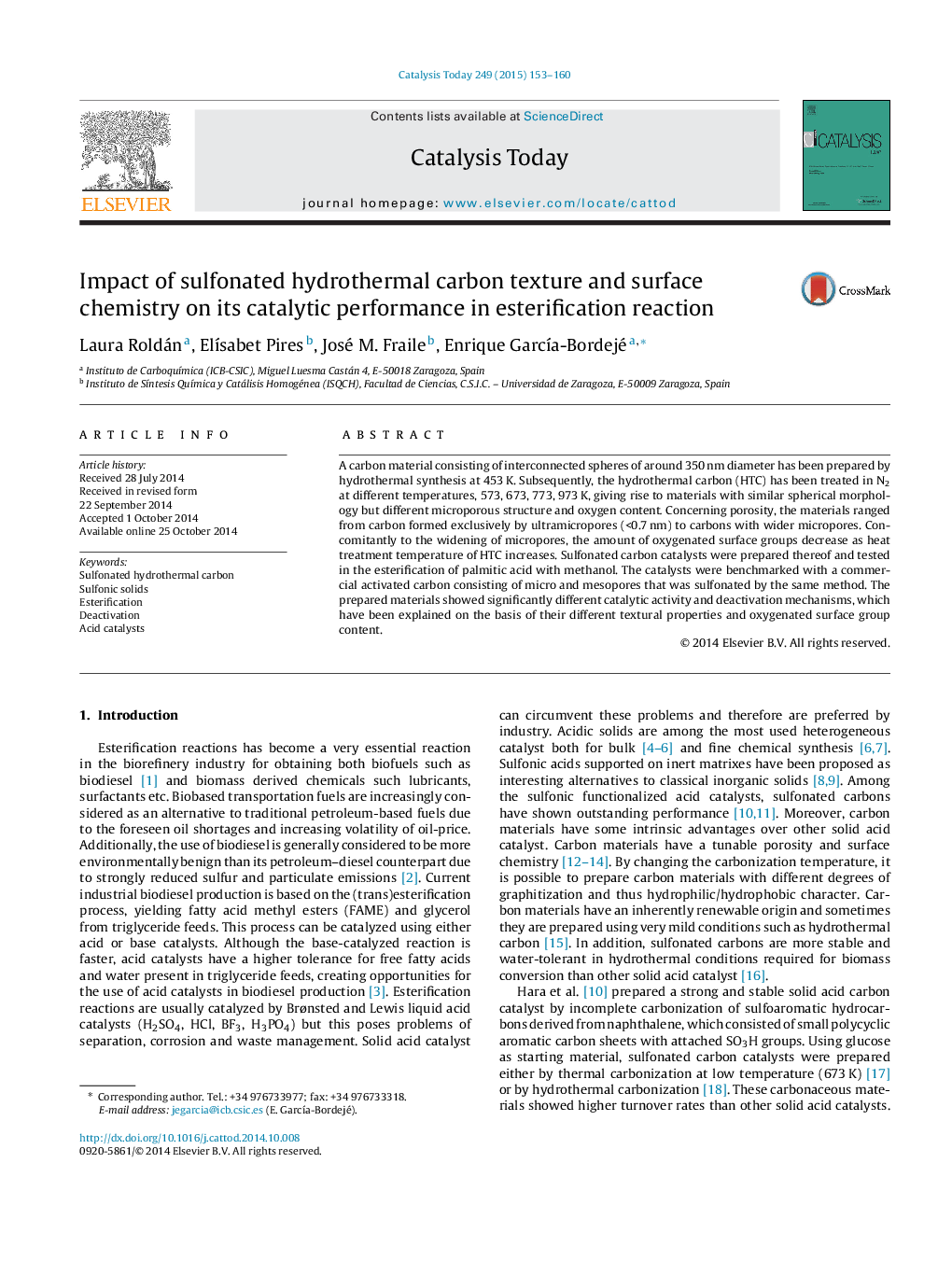| Article ID | Journal | Published Year | Pages | File Type |
|---|---|---|---|---|
| 53721 | Catalysis Today | 2015 | 8 Pages |
•Hydrothermal carbon was calcined at several temperatures and further sulfonated.•773 K is the turning point in catalytic activity and textural properties.•Below 773 K, catalysts are more active, with non-permanent ultramicropores.•At 773 K or above, catalysts have permanent porosity but are less active.•Deactivation occurs by surface esterification below and pore blocking above 773 K.
A carbon material consisting of interconnected spheres of around 350 nm diameter has been prepared by hydrothermal synthesis at 453 K. Subsequently, the hydrothermal carbon (HTC) has been treated in N2 at different temperatures, 573, 673, 773, 973 K, giving rise to materials with similar spherical morphology but different microporous structure and oxygen content. Concerning porosity, the materials ranged from carbon formed exclusively by ultramicropores (<0.7 nm) to carbons with wider micropores. Concomitantly to the widening of micropores, the amount of oxygenated surface groups decrease as heat treatment temperature of HTC increases. Sulfonated carbon catalysts were prepared thereof and tested in the esterification of palmitic acid with methanol. The catalysts were benchmarked with a commercial activated carbon consisting of micro and mesopores that was sulfonated by the same method. The prepared materials showed significantly different catalytic activity and deactivation mechanisms, which have been explained on the basis of their different textural properties and oxygenated surface group content.
Graphical abstractFigure optionsDownload full-size imageDownload high-quality image (200 K)Download as PowerPoint slide
